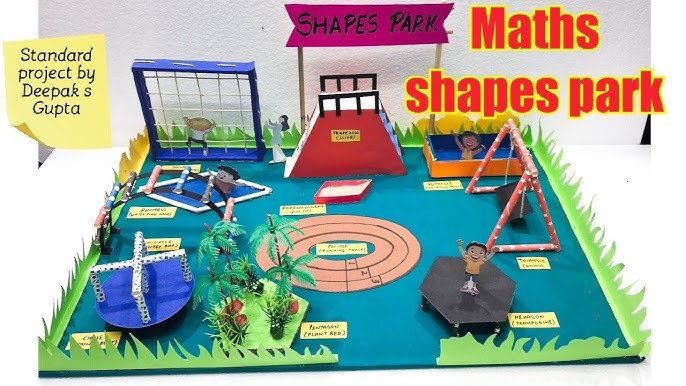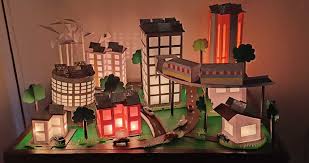
Geometrical Park and Smart City:
A Geometrical Park and a Smart City are two modern concepts that can complement each other in urban planning, sustainability, and technological advancement. Below, I’ll explain both concepts and how they may intertwine in a modern urban environment.
1. Geometrical Park:
As described earlier, a geometrical park is a public space designed with symmetry, geometric shapes, and patterns, often created with purpose and careful planning. These parks focus on aesthetic order, promoting harmony between nature, architecture, and public spaces. They feature clean lines, repetitive forms, and often use materials like stone, concrete, or geometric plant arrangements.
Key Features of a Geometrical Park:
- Symmetry & Balance: This includes elements like grid patterns, circular paths, or rectangular gardens.
- Landscaping: Geometric shapes are also reflected in tree planting, flower beds, and grass patterns.
- Sculptures/Installations: These may be part of the design, using angular, geometric forms to match the surroundings.
- Pathways: Walkways, bike paths, or roads are often designed in a way that fits within the larger geometric scheme, creating a navigable, visually interesting environment.
Benefits:
- Aesthetic Appeal: The use of clean, structured, and repetitive patterns can help create a sense of calm and beauty.
- Sustainability: Geometrical parks can be designed to optimize space and resources, integrating green technologies such as rain gardens or energy-efficient lighting.
- Public Engagement: These parks can also encourage public interaction through seating areas, interactive installations, and spaces for social gatherings.
2. Smart City:

A Smart City refers to a city that uses advanced technologies and data-driven solutions to enhance the quality of life for its citizens, improve sustainability, and streamline services. Smart cities rely on interconnected systems, sensors, and data analytics to improve city functions like traffic management, energy use, public health, and safety.
Key Features of a Smart City:
- Technology Integration: Smart cities leverage technologies like the Internet of Things (IoT), artificial intelligence (AI), and big data to monitor and optimize city infrastructure.
- Sustainability: They often incorporate energy-efficient solutions, renewable energy sources, and waste management systems to minimize environmental impact.
- Connected Services: Public services like transportation, healthcare, and waste management are often digitally connected, providing real-time data to both citizens and authorities.
- Smart Infrastructure: This includes intelligent traffic systems, smart lighting, and buildings equipped with sensors to improve efficiency and safety.
Benefits:
- Efficiency: Smart systems can help reduce energy usage, manage traffic flows, and improve public safety through predictive analytics.
- Sustainability: Smart cities are often designed to minimize waste, use resources more efficiently, and create green spaces that contribute to environmental health.
- Quality of Life: Technology is used to improve healthcare, mobility, and communication, making life more convenient for residents.
How Geometrical Parks and Smart Cities Interact:
In a Smart City, the inclusion of a geometrical park can further enhance the technological and environmental goals of urban planning. The combination of geometry, nature, and technology can result in parks that are not only visually striking but also serve practical, sustainable purposes.
1. Smart Park Design:
- Smart Lighting: A geometrical park in a smart city could use motion sensors and energy-efficient lighting to create a dynamic experience, saving energy while enhancing safety and ambiance.
- Green Technology: Geometric parks could incorporate solar-powered fountains, rainwater harvesting systems, and automated irrigation to ensure sustainable water and energy management.
- Smart Paths: Pedestrian and cycling paths in these parks can be equipped with smart sensors to monitor foot traffic, air quality, and other environmental factors in real time.
2. Data Collection and Optimization:
- Surveillance: Smart sensors could monitor and manage the park’s health, including tree growth, water levels, or even human activity in certain areas.
- Public Engagement: Interactive kiosks, apps, or digital installations could be used to provide park visitors with information about the park’s design, history, or live updates on events and activities.
3. Connectivity and Infrastructure:
- Public Wi-Fi: In a smart city, the geometrical park could provide free Wi-Fi, allowing visitors to stay connected and use apps that provide information about the park’s features or activities.
- Integration with City Services: The park could be connected with the broader smart city network to help monitor urban temperature, air quality, and pollution levels, which can be analyzed for better urban planning.
4. Enhancing Sustainability:
- Energy-Efficient Features: Using energy-efficient materials, like LED lights or solar-powered devices, alongside sustainable green infrastructure like smart irrigation or energy-saving fountains, can reduce the environmental impact of the park.
- Smart Waste Management: Geometrical parks could use sensors in waste bins to signal when they need to be emptied, optimizing waste collection routes and reducing environmental footprint.
Examples of Geometrical Parks in Smart Cities:
Some smart cities around the world are already integrating geometrical park designs with smart features:
- Songdo, South Korea: A smart city with green spaces that include geometric landscaping and technologies for environmental monitoring.
- Masdar City, UAE: A futuristic city focusing on sustainability with green, geometrically planned parks that incorporate renewable energy sources and smart design elements.
- Barcelona, Spain: This city uses smart technology to integrate urban parks, including geometrically designed green spaces, which are optimized for both aesthetic and ecological benefits.
Conclusion:
A Geometrical Park within a Smart City offers the opportunity to blend art, technology, and sustainability. These parks can not only beautify urban spaces but also serve practical purposes, enhance public engagement, and promote environmental stewardship. By integrating smart technologies like IoT, energy management systems, and data analytics, these parks and cities can create more efficient, sustainable, and livable urban environments.

Leave a Reply